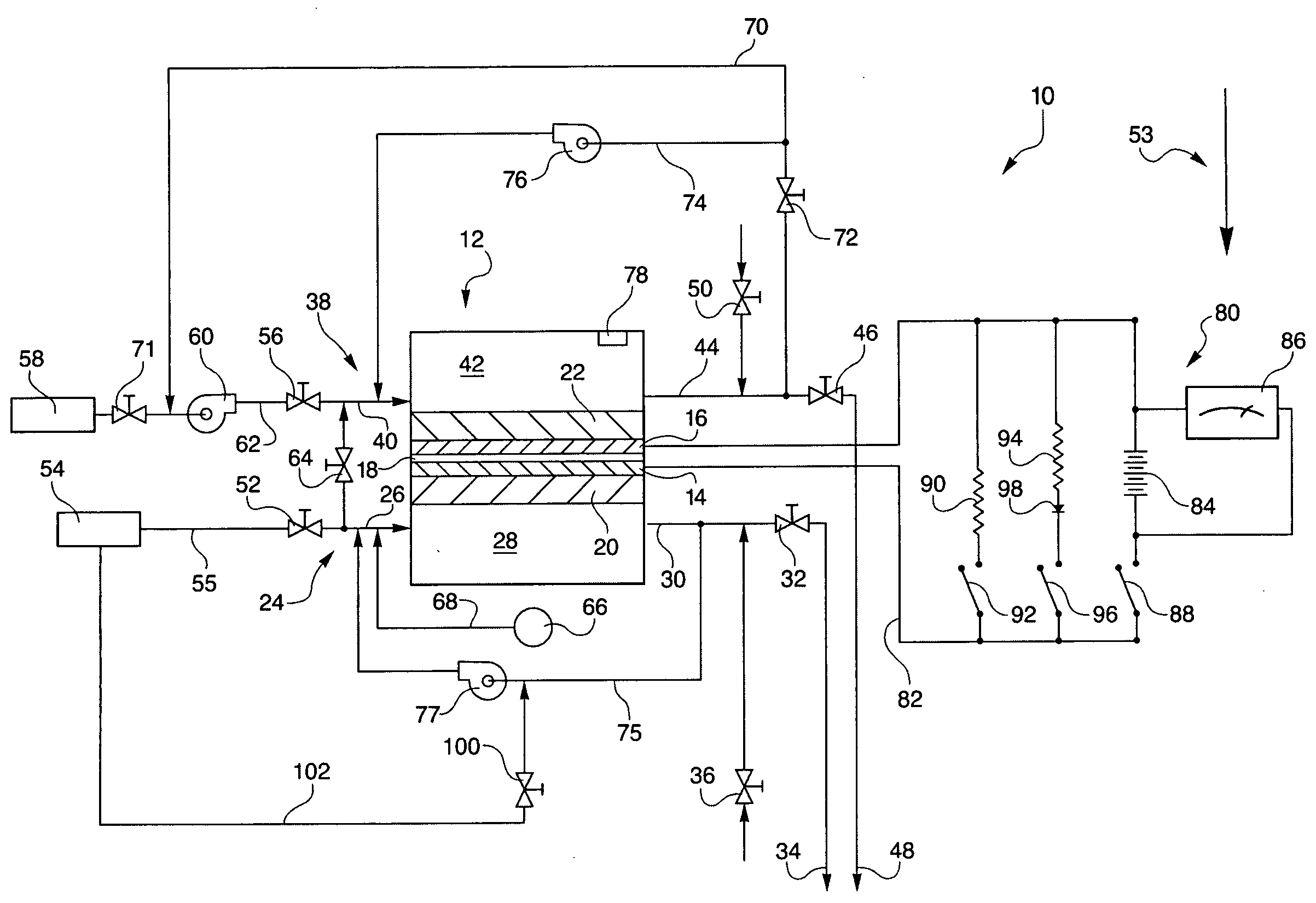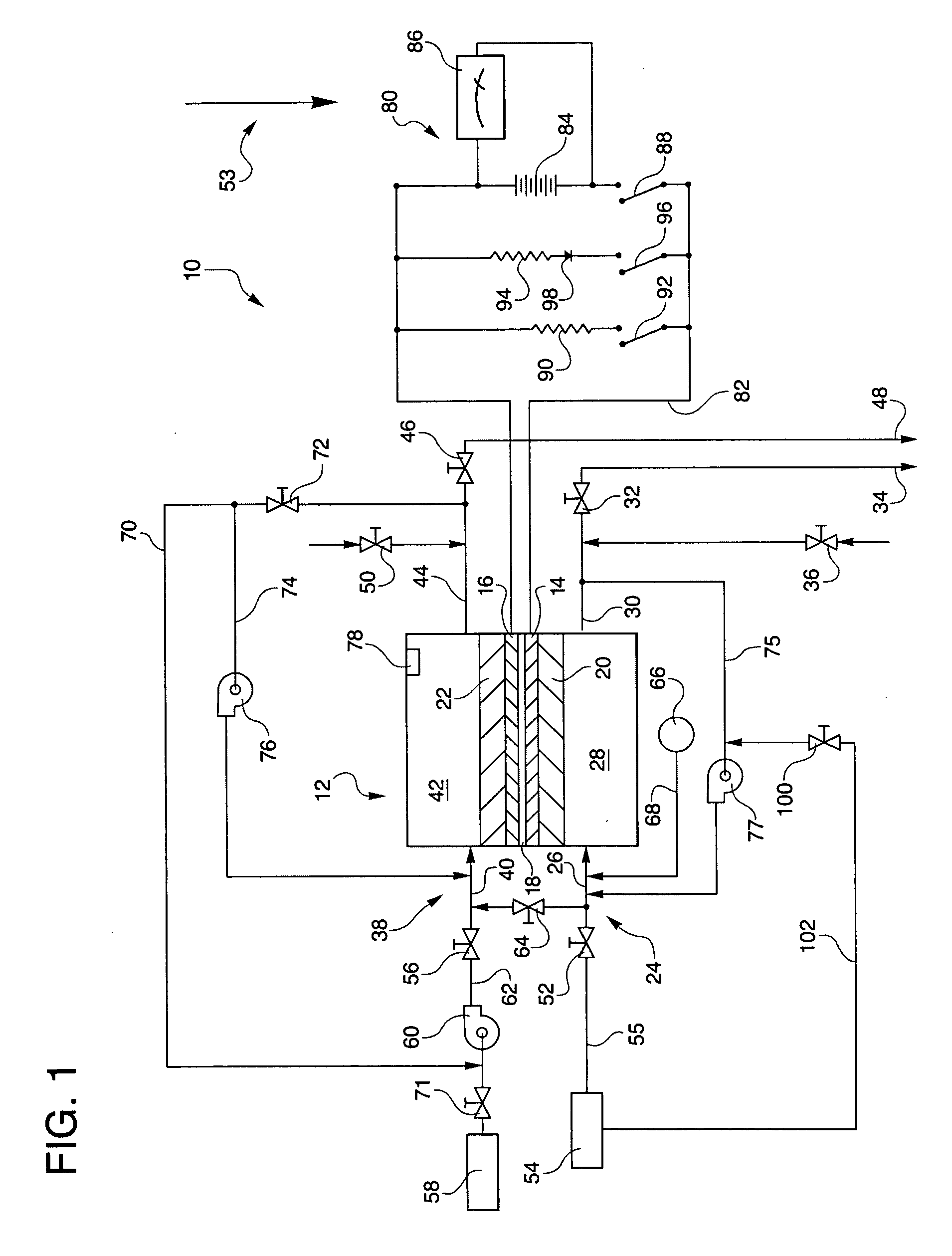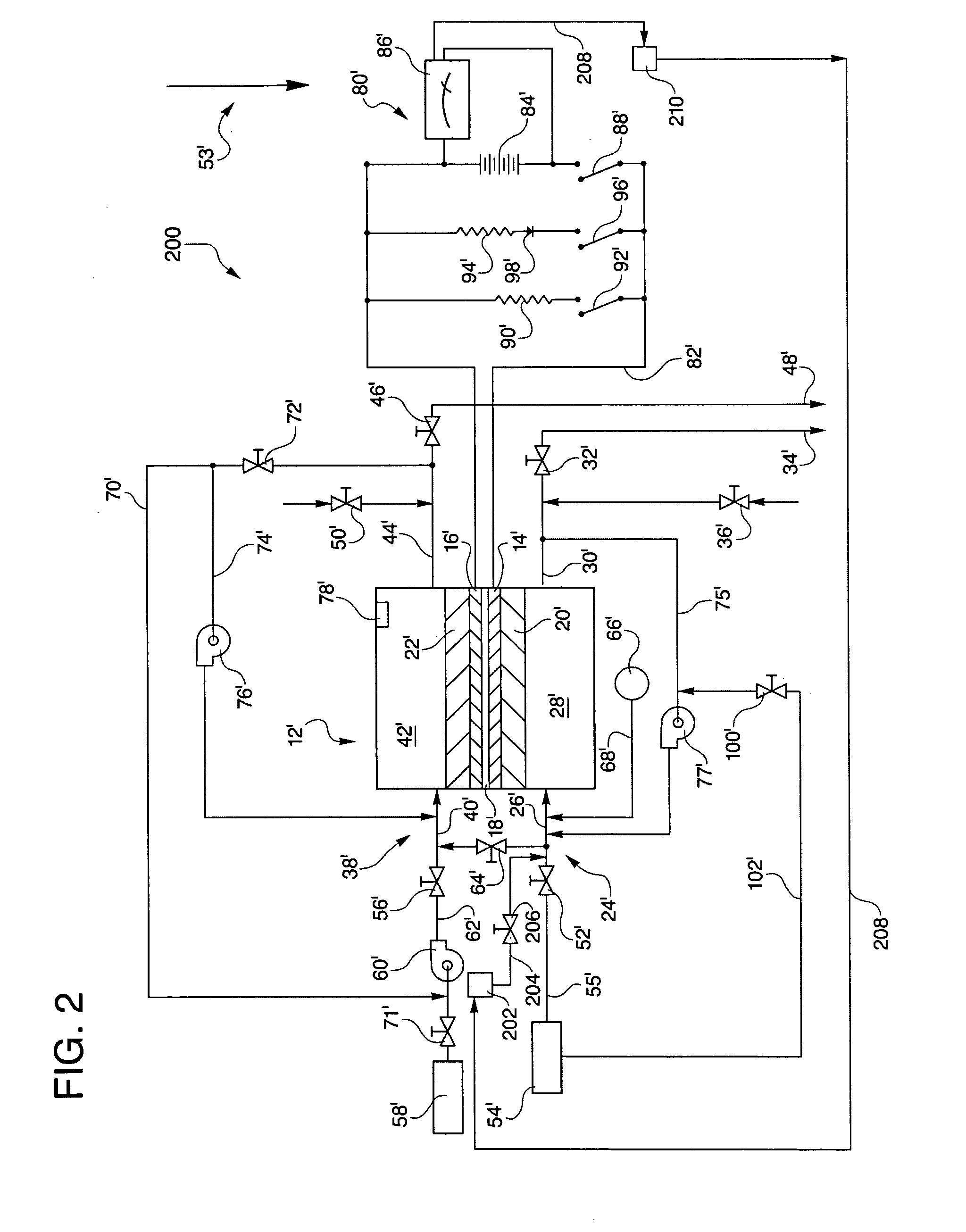Hydrogen passivation shut down system for a fuel cell power plant
- Summary
- Abstract
- Description
- Claims
- Application Information
AI Technical Summary
Benefits of technology
Problems solved by technology
Method used
Image
Examples
first embodiment
[0026]Referring to the drawings in detail, a hydrogen passivation shut down system for a fuel cell power plant is shown in FIG. 1, and is generally designated by the reference numeral 10. The system 10 includes at least one fuel cell, such as a fuel cell 12 having an anode catalyst 14 (which may also be referred to herein as an anode electrode), a cathode catalyst 16 (which may also be referred to as a cathode electrode), and an electrolyte 18 disposed between the anode and cathode. The electrolyte 18 may be in the form of a proton exchange membrane (PEM) of the type described in U.S. Pat. No. 6,024,848, or the electrolyte may be held within a ceramic matrix, such as is typically found in acid aqueous electrolyte fuel cells, such as phosphoric acid electrolyte fuel cells.
[0027]The anode catalyst 14 may be supported on an anode substrate layer 20, and the cathode electrode 16 may be supported on a cathode substrate layer 22. The system 10 also includes an anode flow path 24 in fluid ...
embodiment 200
[0050]FIG. 2 shows a low-pressure hydrogen generator embodiment 200 of the hydrogen passivation shut down system. For purposes of convenience and efficiency, those components described above with respect to the FIG. 1 hydrogen passivation shut down system for a fuel cell power plant 10 that are virtually identical to comparable components in the low-pressure hydrogen generator embodiment 200 are shown in FIG. 2 as primes of the same components in FIG. 1, and where such FIG. 1 components are identical to FIG. 2 components, the components in FIG. 2 are not again described in detail. For example, the fuel cell 12 of FIG. 1, is shown as a fuel cell 12′ in FIG. 2.
[0051]The low-pressure hydrogen generator embodiment of the shutdown system 200 includes at least one fuel cell 12′ having the components described above regarding the fuel cell 12′ as shown in FIG. 1. Additionally, the low-pressure hydrogen generator embodiment includes a low-pressure hydrogen generator 202 for generating hydro...
PUM
 Login to View More
Login to View More Abstract
Description
Claims
Application Information
 Login to View More
Login to View More - R&D
- Intellectual Property
- Life Sciences
- Materials
- Tech Scout
- Unparalleled Data Quality
- Higher Quality Content
- 60% Fewer Hallucinations
Browse by: Latest US Patents, China's latest patents, Technical Efficacy Thesaurus, Application Domain, Technology Topic, Popular Technical Reports.
© 2025 PatSnap. All rights reserved.Legal|Privacy policy|Modern Slavery Act Transparency Statement|Sitemap|About US| Contact US: help@patsnap.com



